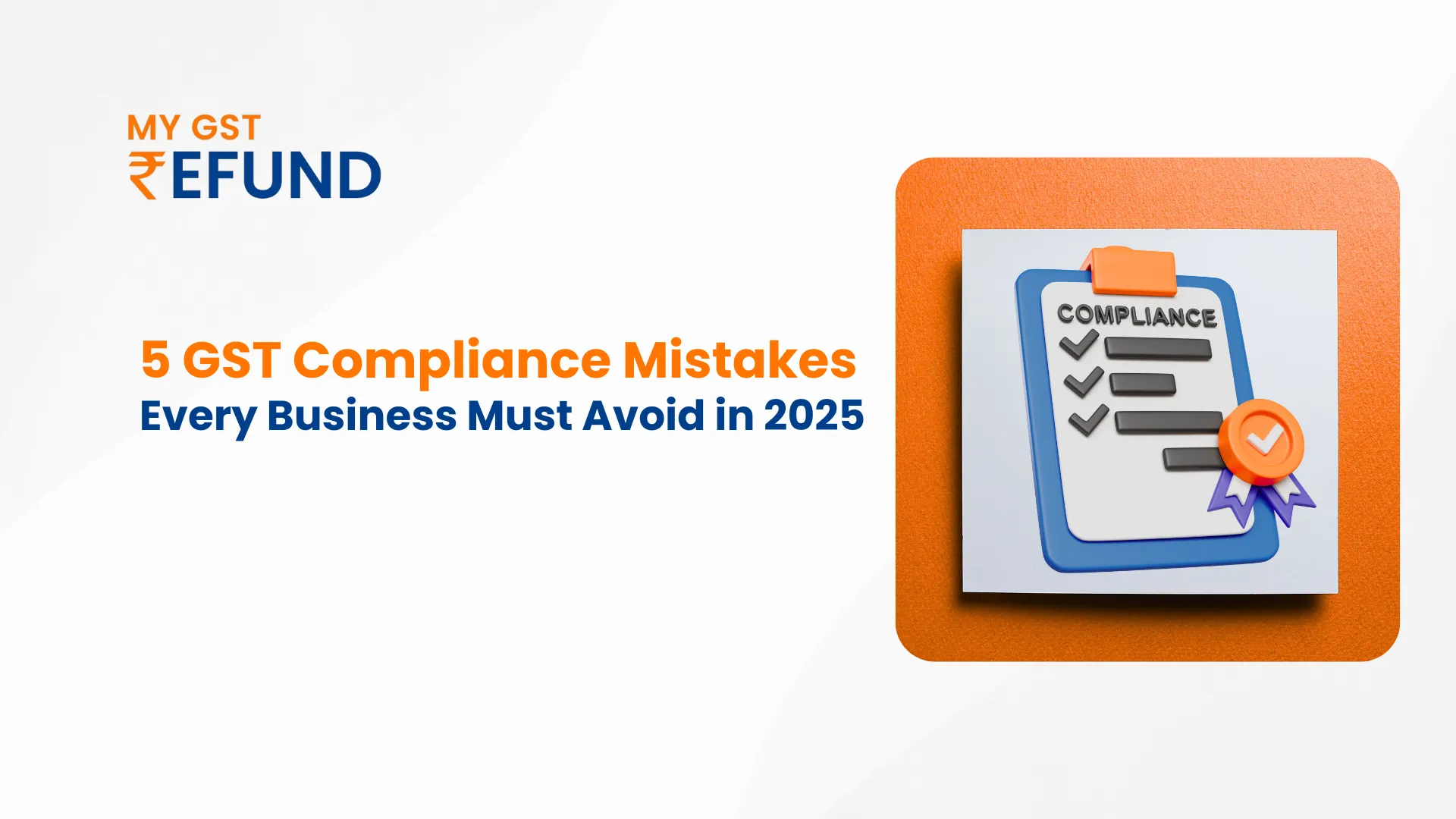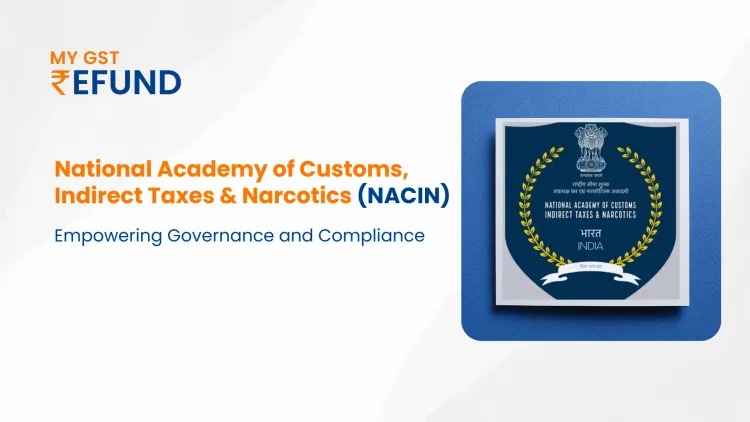5 GST Compliance Mistakes Every Business Must Avoid in 2025
Under the Goods and Services Tax (GST) regime of India, businesses need to follow all regulatory requirements, which extend beyond legal necessity to become an essential operational requirement. Numerous enterprises, especially the small and medium-sized businesses, continue to face difficulties in following changing GST regulations. A combination of mismatched ITC claims and filing deadline noncompliance can result in penalties and audit requirements as well as lead to extreme cases of registration suspension.
This blog details five actual GST compliance problems that business owners need to monitor alongside the appropriate operational solutions.
1. Missing or Delaying GST Return Filing
The common and most expensive mistake businesses make involves missing GSTR-1, GSTR-3B, or GSTR-9 deadlines. The delayed filing of these statements is usually due to final reconciliation works, missing team or vendor data, and unclear task responsibilities within the organization.
The timely submission of tax returns, beyond preventing fees, involves maintaining continual Input Tax Credit (ITC) and maintaining satisfied vendor associations and lower risk of GSTIN suspension. A GST calendar within the company that includes advance preparation for returns enables businesses to maintain scheduling control. The best approach involves appointing someone to fulfill tax professional or team member responsibilities because this method establishes consistent operations while eliminating dependency on memory or spontaneous alerts.
2. Claiming Incorrect or Unmatched ITC
The majority of businesses consider ITC as if it were a free benefit, but they do not understand the fundamental requirements behind these claims. Businesses might lose their eligibility to claim ITC during scrutiny if suppliers fail to file proper GSTR-1 or when invoice information differs from the business records.
The monthly comparison between your purchase register and GSTR-2B must become standard practice rather than waiting until year-end to conduct this process. Judging taxes to be payable on non-GST transactions combined with unmarked invoices in 2B will cause both interest penalties and official warnings. You can prevent ITC disallowances by using reconciliation tools along with an actual filing validation process for each claim.
3.Over-Reliance on Manual Data Entry
The process of preparing GST returns using spreadsheets by businesses today results in numerous errors due to human intervention. Incorrect invoice values together with tax rate misclassification and unreported invoices result in financial losses alongside the possibility of tax authority investigation.
Affordable automated tools enable organisations to reduce their errors through digital filing processes and software programs. An easy connection of your financial application to the GST platform allows returns to calculate correctly and ensures invoices transfer themselves automatically while detecting discrepancies before submission.
Human filing of paperwork operates initially until the invoice numbers reach significant levels where manual errors begin to increase steadily. Organisations achieve better control and long-term compliance stability through investments in semi-automated systems.
4. Not Verifying Vendor Compliance
The assumption among businesses is that their ITC becomes secured when suppliers issue GST invoices. Your ITC remains at risk of blocking by the tax authorities even though you made complete payment to your vendor when he fails to file returns or mismatches invoice information.
Examination of GSTR-2B data regularly enables you to detect vendors who have not submitted their GSTR-1. When your vendors repeatedly show non-compliance, it becomes essential to contact them for payment delay until they establish compliance standards. Tracking supplier data through individual ledgers, which display file status and billing records, helps businesses determine noncompliant vendors so appropriate action can be taken in advance.
5. Poor Handling of GST Notices and Communications
Neglecting GST notices alongside insufficient proper response serves as regular misconduct. The notices from the GST authorities typically deal with ITC mismatches together with GSTR-1 vs. 3B discrepancies and late filings or audit queries. The specified deadline for notice response lies between 7 and 15, and non-response leads authorities to turn the matter into a demand or penalty.
The best approach involves redirecting GST notices to one location while establishing a solution for document tracking and reply development. All organizations, regardless of size, must maintain pre-made response documents to address regular ITC claim clarifications as well as rectification requests. A CA or consultant serving as backup guarantees correct responses, which decrease the likelihood of escalating the matter.
GST Compliance Checklist: Key Areas and Actions for Businesses
Business managers who handle GST compliance work can use below checklist as a practical guideline. The list contains essential procedures that cover every significant part of compliance to help your business maintain direction while preventing common errors.
Practical Steps to Strengthen Your GST Compliance
No business follows the same approach for compliance strengthening, but each organisation must follow these common practices to enhance its compliance framework:
- Your company should start preparing your GST returns between three and five days before the deadline arrives.
- Organisations must perform monthly comparisons between GSTR-2B details and their purchase registration records.
- A vendor-wise ITC match log must be maintained for regular follow-up activities.
- A business should adopt invoice validation tools to decrease the number of mistakes made during data entry.
- There should be tracking and chronicling of all notices through one single database together with documentation of responses
- Regular training sessions about GST law amendments must be provided to your finance or accounts personnel at least once per quarter.
- Internal GST audits should take place at least two times throughout every year.
- When you make these behavioral patterns part of your operations, GST compliance transitions from being difficult to handle into a normal aspect of your business operations.
Final Thoughts
GST compliance presents no need for feeling heavy on your shoulders. Businesses that use proper processes combined with ongoing monitoring help prevent ITC losses and departmental warnings while receiving completed tax returns from an experienced partner.
A solution for simplified compliance readiness alongside tax credit protection and minimized risks exists at MyGST Refund for your business needs. The team at our organization ensures business compliance while offering advanced ITC reconciliation and legal support for notices to maintain both confidence and penalty protection in GST operations.
You can contact us right now to implement automated GST success systems.
FAQ.
1. What are the risks of GST non-compliance?
Non-compliance can lead to penalties, interest, ITC reversals, and even GSTIN cancellation. Late filings and incorrect claims are common triggers for notices and legal action.
2. How can I avoid errors in GST return filing?
Automate data entry, reconcile GSTR-2B monthly, track due dates, and work only with GST-compliant vendors. These steps significantly lower filing mistakes.
3. Why is GSTR-2B reconciliation important?
It ensures your ITC claims match vendor filings. Skipping it can lead to credit mismatches, reversals, or departmental scrutiny.
Related Posts








